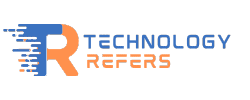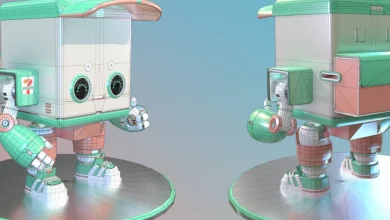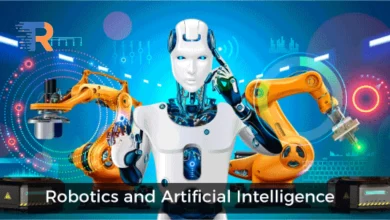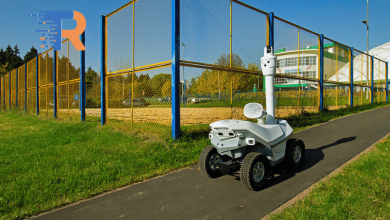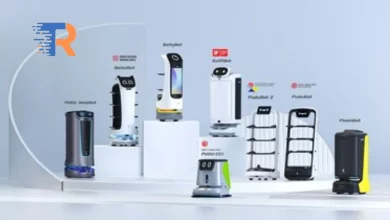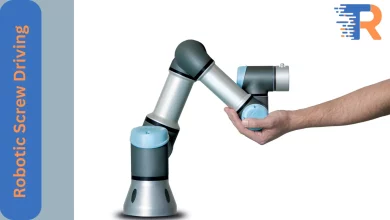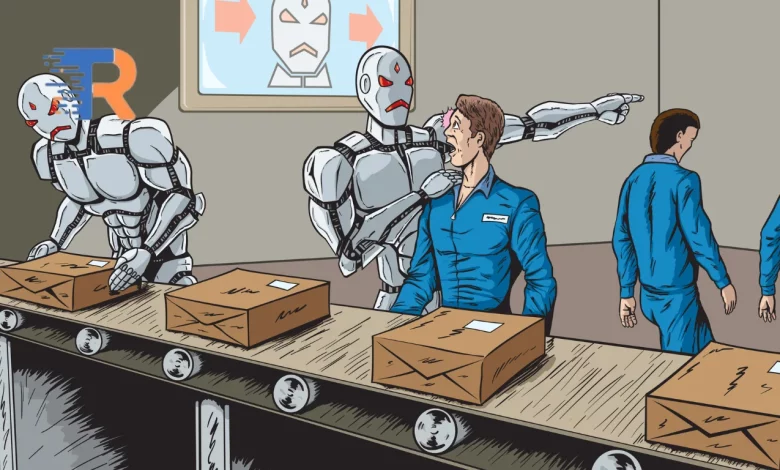
Instead of just looking at what AI can do, this research digs into how it could work in real jobs, especially in computer vision. People often worry that Artificial Intelligence (AI) will take away lots of jobs. But a fresh study from MIT CSAIL, MIT Sloan, The Productivity Institute, and IBM’s Institute for Business Value is changing that view. The unique way of AI job automation they studied gives us a new look at how technology, money, and jobs all connect.
A New Way of Looking at Things
What’s cool about this research is the new way they looked at AI. Most studies count up all the things AI could do in different jobs. But this one starts by looking at what AI needs to be good at, then checks what kind of AI can do that, and finally, thinks about if it makes sense to use that AI in a job.
Thinking about Money
They focus on computer vision, which is like AI eyes that can see and understand things. Instead of just talking about what AI could do, this study looks at whether it’s worth the money to use AI in different jobs. This helps us see how AI might be useful in many different areas.
What the Expert Says
Neil Thompson thinks this research will be a guide for future decisions about technology, money, and jobs. The main person in charge of the study, Neil Thompson, says that what they found is super important. In other words, it can help us figure out how to use AI in jobs without losing too many jobs.
What It Means for the Future
As AI keeps growing and changing how jobs work, this study gives us a smart way to think about it. Instead of worrying that robots will take all the jobs, we can use this research to make good choices. It helps people who make rules, businesses, and workers to make smart decisions about how to use AI without losing too many jobs.
The MIT CSAIL study is like a bright light in the sometimes confusing talk about AI and jobs. By focusing on what makes economic sense and using a cool new way of looking at things, the research helps us see AI in a different light. As we go into a future where AI becomes a big part of work, this study is like a guide, giving us a simple way to understand the challenges and opportunities that come with using AI in our jobs.
Read Must: Flexxbotics Gets Support to Add Robots to Production
Shaping the Future Workplace: How AI Fits In
In a world where people worry about jobs disappearing due to AI, a recent study on computer vision gives us a different tune. The study says that only around 23% of jobs connected to vision systems make sense economically for AI to take over. This means that AI joining the workforce might happen slowly, like a gentle melody, rather than in a big rush.
Keeping It Simple
The main point of the study is that right now, AI replacing people makes sense in only about 23% of jobs where vision is important. Neil Thompson, a key person in the study, talks about how they focused on the money side of things in the field of computer vision.
Possibility of Change
The study suggests that in the future, things could change. If the costs of developing, using, and running AI systems go down, and if the industry starts offering AI as a service, companies might use AI more quickly. Lowering the money barriers for companies could make AI more attractive, leading to faster changes in jobs.
AI as a Service: A New Idea
The study talks about a possible change in how AI is offered. Instead of companies owning and using AI themselves, it might become more like a service. This is similar to how some companies offer robots as a service, making it easier for others to use them. Neil Thompson says this change could make AI available to smaller businesses without needing a lot of their resources, creating new ways of doing business with AI services.
Making AI Accessible
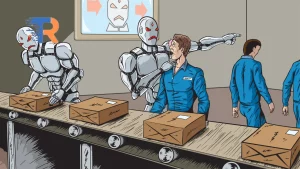 The idea of AI as a service could make advanced technology more available to everyone. Smaller businesses might be able to use AI without needing a lot of their stuff. The study suggests that this change could lead to new and different ways of doing business with AI services.
The idea of AI as a service could make advanced technology more available to everyone. Smaller businesses might be able to use AI without needing a lot of their stuff. The study suggests that this change could lead to new and different ways of doing business with AI services.
As we think about AI becoming a part of our work, this study gives us a different perspective. It says that AI joining in might happen slowly and gently. Looking at the money side and talking about new ideas like AI as a service, the research challenges what we might have thought before. It suggests a more relaxed and balanced way for AI to become a part of work, bringing both new chances and things to think about for businesses and workers.
Shaping the Future Workplace: How AI Fits In
A new study about Artificial Intelligence (AI) challenges what we usually think about how AI affects jobs. Instead of just taking away jobs, this research imagines a future where AI not only changes some jobs but also creates many new ones. Beyond just thinking about money, the study explores different and exciting possibilities that come with using AI in our changing workplaces.
Changing Jobs, Not Taking Away
This study shows that as more AI becomes part of our jobs, we might discover new types of work. Instead of worrying about losing jobs because of machines, the study suggests that using AI could create new jobs for people. Even though some jobs might become simpler with AI, there could be a need for skilled people to handle and improve these high-tech systems.
Big Impact on Jobs and Money
The study doesn’t just look at individual businesses. It talks about how the whole economy could change with more AI. As businesses start using more AI, they might need more smart people to handle these advanced technologies. This could lead to more jobs, higher incomes, and better living standards for everyone.
Big Change Needed for Big Benefits
The study says that to get the good stuff from using AI, businesses and workers need to change how they do things. Fleming, a person involved in the study, says that we’ll only see the full benefits when businesses and workers make big changes. The study suggests that using AI shouldn’t just be about replacing jobs but should be a chance to make big changes in how we do business and how people work.
Looking Beyond Job Changes
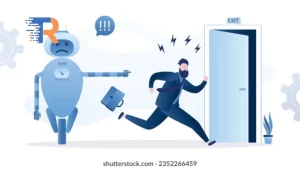 The study encourages businesses to think beyond just using machines to do jobs. Instead, it invites them to imagine all the new and different things we could do with AI.
The study encourages businesses to think beyond just using machines to do jobs. Instead, it invites them to imagine all the new and different things we could do with AI.
Rather than just worrying about losing jobs, the research suggests a future where AI sparks new ideas and opens doors to new opportunities. By really embracing what AI can do, businesses and workers can work together to make a future where everyone gets more chances at work and lives better.
This study is like a guide showing us a different way to think about AI. Instead of being afraid of losing jobs, the research paints a picture of a future where AI brings new possibilities and makes jobs better. It’s an invitation for everyone to explore the exciting things AI can offer, making a future where we use these advanced technologies to create more jobs and make life better for everyone.
Exploring New Frontiers: MIT CSAIL Investigates Early Generative AI
MIT CSAIL is on a journey to explore the world of artificial intelligence (AI). They are looking into generative AI, like ChatGPT, to understand how it works in its early stages. While we know a lot about computer vision systems, the researchers say we’re still figuring out generative AI. By using data from computer vision systems, they aim to understand how AI vision models perform and whether they make economic sense.
A Story Driven by Data
The research is all about using a lot of data from computer vision systems that have been running for a long time. This data helps the researchers look closely at how well AI vision models work and if they are cost-effective. However, we don’t have as much data yet for large language models (LLMs) that power generative AI like ChatGPT. Even though this data is limited, the researchers believe that studying AI vision models can give us some clues about what might happen with LLMs in the future.
Collaborators in the Tale AI job automation
The research is a team effort with key people in the AI field. Brian C. Goehring from IBM’s Institute for Business Value and two members of Thompson’s FutureTech Research Project join as authors. The team also includes affiliate researchers Maja Svanberg and Wensu Li, a post-doctoral student at the Sloan School’s Initiative on the Digital Economy (IDE). MIT-IBM Watson AI Lab supports the project, and the research is now being reviewed by a respected journal.
Shining Light on AI Vision Models -AI job automation
The researchers focus on AI vision models because there’s a lot of data available from computer vision systems. This lets them understand how well these models work and if they make sense economically. While they know generative AI is still in its early days, the research sets the stage for understanding what might happen in the future by looking at existing data-rich areas.
The Journey of Generative AI –AI job Automation
 The research talks about the changing and growing world of generative AI. Unlike computer vision systems, we don’t have as much data yet for large language models.
The research talks about the changing and growing world of generative AI. Unlike computer vision systems, we don’t have as much data yet for large language models.
This means the researchers are aware it’s still early to predict how generative AI might impact jobs. This understanding shows the team’s commitment to exploring thoroughly and acknowledging the challenges in predicting the effects of generative AI on jobs.
MIT CSAIL’s exploration into early generative AI job automation as a guide in understanding the world of artificial intelligence. By using data from computer vision systems, the team sheds light on the potential impact of generative AI. This unique research becomes a foundational story, navigating the early stages of generative AI and offering insights for future explorers in this evolving field.
